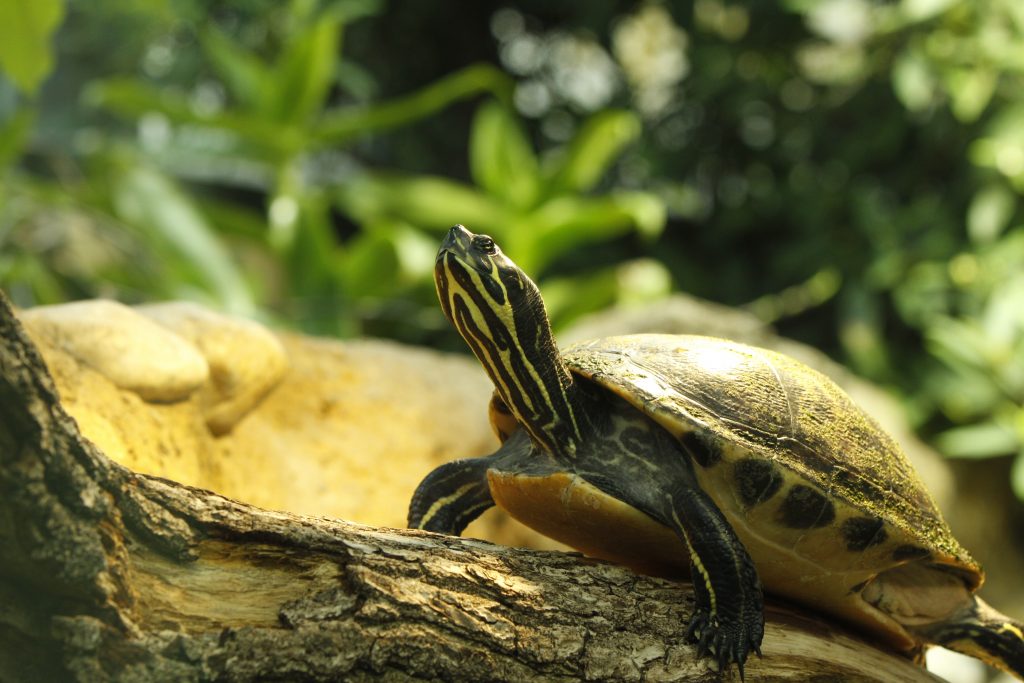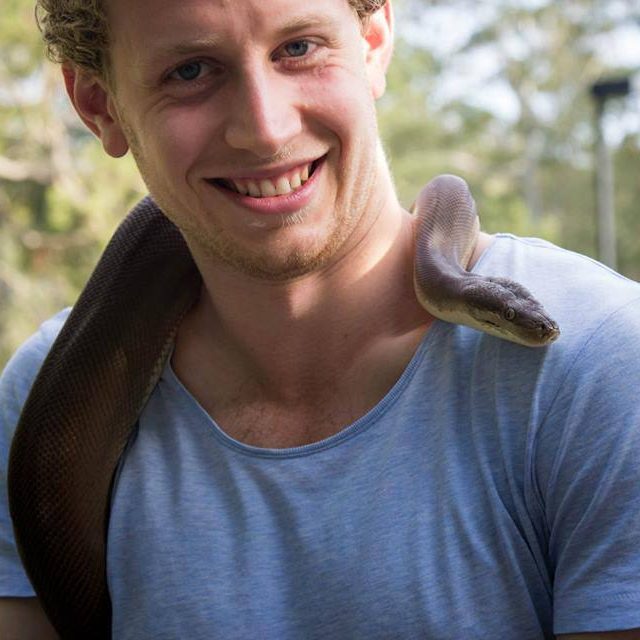
Turtle Facts
Lifespan
50 – 60 years
Adult Size
25-40cm in shell size. (size varies with species). There is no such thing as a “Penny Turtle”. All Australian native turtles will grow very large.
Tank Size
120 x 60 x 60cm Minimum.
Diet
Insects, commercial turtle diets (frozen and pelleted), vegetables/plant matter.
Maintenance Level
Turtles are medium-high maintenance pets.
Turtles make a fascinating and unique pet! It’s easy to fall in love with a baby turtle due to its small size and cute appearance. However, like all reptiles, turtles have a very specific set of requirements in order to live a long and happy life in captivity. It’s important to do your research first before considering bringing a turtle into your life as a pet. This article outlines the basics of turtle care.
Turtle Housing

Housing a turtle is an important factor that determines the overall health and well-being of your turtle. Turtles are solitary animals, they prefer to be housed alone. Having more than one turtle in an enclosure may lead to dominance and aggression issues.
A hatchling turtle may be housed in a 60x45x45cm (minimum) tank for the first 12-18 months of its life. The minimum sized tank for one adult turtle is 120x60x60cm. A turtle tank should have a dry dock (land) area as well as a mesh or wire lid (glass lids are not suitable).
The water volume should fill at least half of the tank. A substrate such as coarse gravel or crushed limestone (calgrit) can be used along with the addition of plants and driftwood to provide them with cover. Ponds can also be used to house adult turtles outdoors.
Heating and Lighting
Providing adequate heating within a turtle’s enclosure is essential for their health and well-being. Turtles require a water temperature maintained between 22-26˚C (varies between species) and a basking spot of about 28-32˚C above their land area. Recommended sources of heat include the use of an aquarium water heater and an incandescent or halogen globe for basking.
Ultraviolet light (UV) plays an important role in a turtle’s growth and development. A 10.0 UVB tube or compact globe must be used as a source of artificial UV lighting in the turtle’s enclosure. UV light is filtered through glass and plastic, and partially filtered through the mesh, so ideally must be positioned directly above the turtle’s tank within 20-30cm of the water. Turtles should also have access to unfiltered, natural light at least once or twice a week. They require a ‘day and night cycle with heat and UV lights running for approximately 10-12 hours each day, set on a timer.
Maintenance
Turtles are messy animals and therefore regular water changes and a suitable filter are necessary inside their tank to maintain water quality and hygiene. A good quality canister filter is recommended for larger tanks, with regular water changes. These water changes must replace 30% of the tank’s water every week. During these water changes, the gravel in the tank should be vacuumed and cleaned. Cleaning the gravel during water changes will increase the longevity of the tank and water for your turtle.
It is important to test the tank’s water using an aquarium testing kit on a weekly basis to ensure correct water parameters are maintained. Any fresh water added to the tank should be treated with a water conditioner to remove chlorine and chemicals.
Nutrition
In the wild, turtles will feed on a variety of live foods including aquatic insects, fish, crustaceans, snails and plant matter. Long-necked turtles are primarily carnivorous, whilst short-necked turtles are omnivorous (consuming both animal and plant matter).
In captivity, turtles should be fed a varied diet comprising live food, pelleted food, frozen food and fresh fruits and veggies, depending on the species of turtle. Live foods that can be offered include crickets, woodies, earthworms, blood worms, feeder fish and yabbies. Live insects can be coated with a calcium and vitamin supplement before being offered to the turtle.
Short-necked turtles should be fed live aquatic plants as well as fruits and vegetables such as apples, grapes, figs, kale, endive, zucchini and carrots.
It is recommended that hatchling and juvenile turtles are fed daily and adults can be offered food two to three times a week. As turtles are extremely messy eaters, placing them in a separate ‘feeding tub’ can be an easier way to feed offering them live and frozen foods. Ensure that there is enough water to fully submerge the turtle, then leave the animal in the feeding tub for 15-20 minutes (or until all food is consumed).
Article written by Ben Dessen

